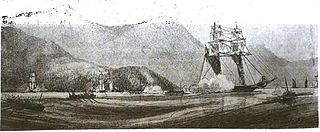 W
WThe Action of 1 January 1800 was a naval battle of the Quasi-War that took place off the coast of present-day Haiti, near the island of Gonâve in the Bight of Léogâne. The battle was fought between an American convoy of four merchant vessels escorted by the United States naval schooner USS Experiment, and a squadron of armed barges manned by Haitians known as picaroons.
 W
WThe Action of 7 April 1800 was a minor naval engagement fought between a British squadron blockading the Spanish naval base of Cádiz and a convoy of 13 Spanish merchant vessels escorted by three frigates, bound for the Spanish colonies in the Americas. The blockade squadron consisted of the ships of the line HMS Leviathan and HMS Swiftsure and the frigate HMS Emerald, commanded by Rear-Admiral John Thomas Duckworth on Leviathan. The Spanish convoy sailed from Cádiz on 3 April 1800 and encountered Duckworth's squadron two days later. The Spanish attempted to escape; Emerald succeeded in capturing one ship early on 6 April. The British captured a brig the following morning and the British squadron divided in pursuit of the remainder.
 W
WThe Action of 10 December 1800 was a minor engagement of the Napoleonic Wars in which the Spanish privateer gunboat San Francisco Javier, alias Poderoso, under Don Miguel Villalba, captured a hired brig of the Royal Navy commanded by Lieutenant Charles Niven.
 W
WThe Action of 31 March 1800 was a naval engagement of the French Revolutionary Wars fought between a Royal Navy squadron and a French Navy ship of the line off Malta in the Mediterranean Sea. By March 1800 Valletta, the Maltese capital, had been under siege for eighteen months and food supplies were severely depleted, a problem exacerbated by the interception and defeat of a French replenishment convoy in mid-February. In an effort to simultaneously obtain help from France and reduce the number of personnel maintained in the city, the naval commander on the island, Contre-amiral Pierre-Charles Villeneuve, ordered his subordinate Contre-amiral Denis Decrès to put to sea with the large ship of the line Guillaume Tell, which had arrived in the port shortly before the siege began in September 1798. Over 900 men were carried aboard the ship, which was to sail for Toulon under cover of darkness on 30 March.
 W
WAt the Battle of Ampfing on 1 December 1800, Paul Grenier's two divisions of the First French Republic opposed the Austrian army southwest of the town of Ampfing during the French Revolutionary Wars. The Austrians, under the leadership of Archduke John of Austria, forced their enemies to retreat, though they sustained greater losses than the French. Ampfing is located 63 kilometers east of Munich and 8 km (5.0 mi) west of Mühldorf am Inn.
 W
WThe Battle of Biberach on 9 May 1800 saw a French First Republic corps under Laurent Gouvion Saint-Cyr engage part of a Habsburg Austrian army led by Pál Kray. After an engagement in which the Austrians suffered twice as many casualties as the French, Kray withdrew to the east. The combat occurred during the War of the Second Coalition, part of the French Revolutionary Wars. Biberach an der Riss is located 35 kilometres (22 mi) southwest of Ulm.
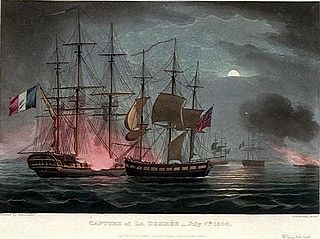 W
WThe Raid on Dunkirk of 7 July 1800 was an attack by a British Royal Navy force on the well-defended French anchorage of Dunkirk in the English Channel during the French Revolutionary Wars. French naval forces had been blockaded in their harbours during the conflict, and often the only method of attacking them was through fireships or "cutting-out" expeditions, in which boats would carry boarding parties into the harbour at night, seize ships at anchor and bring them out. The attack on Dunkirk was a combination of both of these types of operation, aimed at a powerful French frigate squadron at anchor in Dunkirk harbour. The assault made use of a variety of experimental weaponry, some of which was tested in combat for the first time with mixed success.
 W
WThe East Indies theatre of the French Revolutionary Wars was a series of campaigns related to the major European conflict known as the French Revolutionary Wars, fought between 1793 and 1801 between the new French Republic and its allies and a shifting alliance of rival powers. Although the Indian Ocean was separated by vast distance from the principal theatre of the conflict in Western Europe, it played a significant role due to the economic importance of the region to Great Britain, France's most constant opponent, of its colonies in India and the Far Eastern trade.
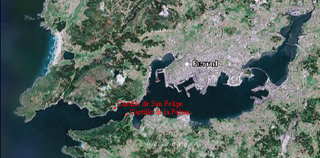 W
WThe Ferrol Expedition took place on 25 and 26 August 1800, and was an unsuccessful British attempt to capture Ferrol from Spain. Ferrol was a major Spanish naval base with a shipyard for shipbuilding and dry dock for repairs.
 W
WThe French campaign in Egypt and Syria (1798–1801) was Napoleon Bonaparte's campaign in the Ottoman territories of Egypt and Syria, proclaimed to defend French trade interests, seek further direct alliances with Tipu Sultan, weaken Britain's access to India, and to establish scientific enterprise in the region. It was the primary purpose of the Mediterranean campaign of 1798, a series of naval engagements that included the capture of Malta. The campaign ended in defeat for Napoleon, and the withdrawal of French troops from the region.
 W
WThe French Revolutionary Wars were a series of sweeping military conflicts lasting from 1792 until 1802 and resulting from the French Revolution. They pitted France against Great Britain, the Holy Roman Empire, Prussia, Russia, and several other monarchies. They are divided in two periods: the War of the First Coalition (1792–97) and the War of the Second Coalition (1798–1802). Initially confined to Europe, the fighting gradually assumed a global dimension. After a decade of constant warfare and aggressive diplomacy, France had conquered a wide array of territories, from the Italian Peninsula and the Low Countries in Europe to the Louisiana Territory in North America. French success in these conflicts ensured the spread of revolutionary principles over much of Europe.
 W
WThe Fries Rebellion, also called Fries' Rebellion, the House Tax Rebellion, the Home Tax Rebellion and, in Deitsch, the Heesses-Wasser Uffschtand, was an armed tax revolt among Pennsylvania Dutch farmers between 1799 and 1800. It was the third of three tax-related rebellions in the 18th century United States, the earlier two being Shays' Rebellion and the Whiskey Rebellion. It was commemorated in 2003 with a Pennsylvania historical marker erected in Quakertown, Pennsylvania, where it first erupted.
 W
WThe Battle of Heliopolis was a French victory by the armée d'Orient under General Kléber over the Ottoman army at Heliopolis on 20 March 1800.
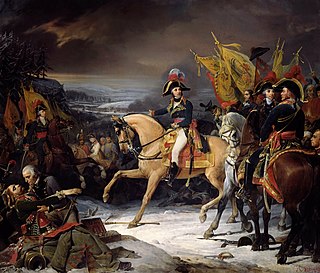 W
WThe Battle of Hohenlinden was fought on 3 December 1800, during the French Revolutionary Wars. A French army under Jean Victor Marie Moreau won a decisive victory over the Austrians and Bavarians led by Archduke John of Austria. After being forced into a disastrous retreat, the allies were compelled to request an armistice that effectively ended the War of the Second Coalition. Hohenlinden is 33 km east of Munich in modern Germany.
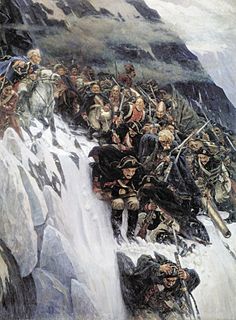 W
WThe Italian and Swiss expeditions of 1799 and 1800 were undertaken by a combined Austro-Russian army under overall command of the Russian General Alexander Suvorov against French forces in Piedmont, Lombardy and Switzerland as part of the Italian campaigns of the French Revolutionary Wars in general and the War of the Second Coalition in particular.
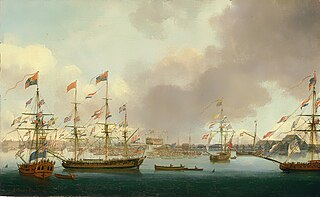 W
WThe Battle of the Malta Convoy was a naval engagement of the French Revolutionary Wars fought on 18 February 1800 during the Siege of Malta. The French garrison at the city of Valletta in Malta had been under siege for eighteen months, blockaded on the landward side by a combined force of British, Portuguese and irregular Maltese forces and from the sea by a Royal Navy squadron under the overall command of Lord Nelson from his base at Palermo on Sicily. In February 1800, the Neapolitan government replaced the Portuguese troops with their own forces and the soldiers were convoyed to Malta by Nelson and Lord Keith, arriving on 17 February. The French garrison was by early 1800 suffering from severe food shortages, and in a desperate effort to retain the garrison's effectiveness a convoy was arranged at Toulon, carrying food, armaments and reinforcements for Valletta under Contre-amiral Jean-Baptiste Perrée. On 17 February, the French convoy approached Malta from the southeast, hoping to pass along the shoreline and evade the British blockade squadron.
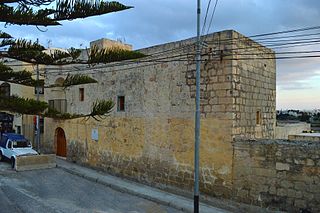 W
WThe Siege of Malta, also known as the Siege of Valletta or the French Blockade, was a two-year siege and blockade of the French garrison in Valletta and the Three Cities, the largest settlements and main port on the Mediterranean island of Malta, between 1798 and 1800. Malta had been captured by a French expeditionary force during the Mediterranean campaign of 1798, and garrisoned with 3,000 men under the command of Claude-Henri Belgrand de Vaubois. After the British Royal Navy destroyed the French Mediterranean Fleet at the Battle of the Nile on 1 August 1798, the British were able to initiate a blockade of Malta, assisted by an uprising among the native Maltese population against French rule. After its retreat to Valletta, the French garrison faced severe food shortages, exacerbated by the effectiveness of the British blockade. Although small quantities of supplies arrived in early 1799, there was no further traffic until early 1800, by which time starvation and disease was having a disastrous effect on health, morale, and combat capability of the French troops.
 W
WThe Battle of Marengo was fought on 14 June 1800 between French forces under the First Consul Napoleon Bonaparte and Austrian forces near the city of Alessandria, in Piedmont, Italy. Near the end of the day, the French overcame Gen. Michael von Melas's surprise attack, driving the Austrians out of Italy and consolidating Napoleon's political position in Paris as First Consul of France in the wake of his coup d’état the previous November.
 W
WThe Battle of Meßkirch was fought on 4 and 5 May 1800 and resulted the victory of French army against the Austrians.
 W
WThe Battle of Montebello was fought on 9 June 1800 near Montebello in Lombardy. During the lead-up to the Battle of Marengo, the vanguard of the French army in Italy engaged and defeated an Austrian force in a "glorious victory".
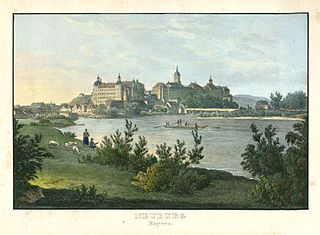 W
WThe Battle of Neuburg occurred on 27 June 1800 in the south German state of Bavaria, on the southern bank of the Danube river. Neuburg is located on the Danube between Ingolstadt and Donauwörth. This battle occurred late in the War of the Second Coalition (1798–1802), the second war between Revolutionary France and the conservative European monarchies, which included at one time or another Britain, Habsburg Austria, Russia, the Ottoman Empire (Turkey), Portugal and Naples. After a series of reverses, several of the allies withdrew from the Coalition. By 1800, Napoleon's military victories in northern Italy challenged Habsburg supremacy there. French victories in the upper Danubian territories opened a route along that river to Vienna.
 W
WThe Polygar Wars or Palaiyakkarar Wars were wars fought between the Polygars (Palaiyakkarars) of the former Tirunelveli Kingdom in Tamil Nadu, India and the British East India Company forces between March 1799 to May 1802 or July 1805. The British finally won after carrying out gruelling protracted jungle campaigns against the Polygar armies. Many lives were lost on both sides and the victory over the Polygars brought large parts of the territories of Tamil Nadu under British control, enabling them to get a strong hold in Southern India.
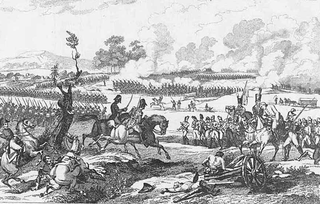 W
WThe Battle of Pozzolo also known as the Battle of the Mincio River and Monzambano was fought during the War of the Second Coalition. A French army under General Guillaume Brune crossed the Mincio River and defeated an Austrian force under General Heinrich von Bellegarde. The Austrians were subsequently pushed back to Treviso where the Armistice of Treviso was signed. This truce would lead to the Treaty of Lunéville and the withdrawal of Austria from the war.
 W
WThe Battle of Puerto Plata Harbor took place in 1800 with France and Spain on one side, and the United States on the other, during the undeclared Quasi-War officially between the French First Republic and the United States.
 W
WThe Quasi-War was an undeclared war fought from 1798 to 1800 between the United States and France. Most of the fighting took place in the Caribbean and off the Atlantic coast.
 W
WThe combat of Turbigo was an episode of the War of the Second Coalition It took place on May 31, 1800 in Turbigo between Austrians and French, the latter coming from Piedmont after crossing the Alps. On May 30, 1800 the French soldiers of the Boudet division entered Novara. Also on the 30th, General Duhesme took up position with the Boudet and Loison divisions on the banks of the Ticino river, the Boudet division was placed in front of Trecate and that of Loison in Vigevano and surroundings. On May 31, 1800 Napoleon Bonaparte was in Novara. Napoleon Bonaparte, First Consul at the time, exploited the uncertainty of his adversaries and set off towards Ticino river.
 W
WThe United Irish Uprising in Newfoundland began with rumours in April 1800 at St. John's, Newfoundland Colony that as many as 400 men took a secret oath of the Society of United Irishmen. The recent Irish Rebellion of 1798 had inspired some of the Irish people in the Newfoundland Colony to plan and organize a rebellion. This included soldiers located at Signal Hill, Fort William, and Fort Townshend. It was suspected that as many as eighty soldiers planned to meet and mutiny against the British Army.
 W
WThe Action between the USS Boston and Berceau, was a single ship action off Guadeloupe, during the Quasi-War with France. USS Boston, Capt. George Little, captured the French corvette Berceau, capitaine de frégate Louis-André Senez. Cruising 600 miles northeast of Guadeloupe in the morning of 12 October, Boston, spotted two vessels that by 8:00 A.M. were determined to be warships, a schooner and the 24-gun Berceau, which then headed in different directions.
 W
WUSS Constellation vs La Vengeance, or the Action of 1 February 1800, was a single-ship action fought between frigates of the French Navy and the United States Navy during the Quasi-War. In the battle the American frigate USS Constellation tried to take the French frigate La Vengeance as a prize. Both ships were heavily damaged. Although the French frigate struck her colors (surrendered) twice, she managed to flee only after the main mast of her opponent had fallen.
 W
WUSS Enterprise vs Flambeau was a single ship action fought in October 1800 during the Quasi-War, and the final battle between French and American forces. During the action, USS Enterprise defeated the French brig Flambeau off the leeward side of the island of Dominica in the Caribbean Sea. Although Enterprise was outgunned by Flambeau, she was still able to take her as a prize after a short battle. The battle helped bring to fame Enterprise's commanding officer, John Shaw, who added the capture of Flambeau to his already long list of French prizes.
 W
WThe War of the Second Coalition (1798–1802) was the second war on revolutionary France by most of the European monarchies, led by Britain, Austria and Russia, and including the Ottoman Empire, Portugal, Naples, various German monarchies and Sweden, though Prussia did not join this coalition and Spain supported France.